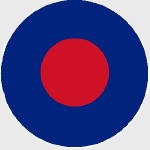Corgi US37602 Royal Navy Westland Wessex HAS.3 Helicopter - XP142 'Humphrey', HMS Aantrim, South Atlantic, May 1982 (1:72 Scale)
"Obsolete weapons do not deter."
- British Prime Minister Margaret Thatcher
 The Westland Wessex is a turbine-powered version of the Sikorsky S-58 "Choctaw", developed under license by Westland Aircraft, initially for the Royal Navy, but later for the Royal Air Force (RAF). The Wessex was built at Westland's factory at Yeovil in Somerset. The name Wessex had also been used for a fixed wing light transport of 1930, a modification of the Westland IV.
The Westland Wessex is a turbine-powered version of the Sikorsky S-58 "Choctaw", developed under license by Westland Aircraft, initially for the Royal Navy, but later for the Royal Air Force (RAF). The Wessex was built at Westland's factory at Yeovil in Somerset. The name Wessex had also been used for a fixed wing light transport of 1930, a modification of the Westland IV.
The first Wessex, a HAS.1 flew in 1958, and they entered anti-submarine duties in 1961 with the Royal Navy. Royal Navy's Fleet Air Arm anti-submarine examples (HAS Mk.1, HAS Mk.3) used the Napier Gazelle engine, a turboprop engine developed into a turboshaft. This made the Wessex the first helicopter to have a free-power turbine, where the power shaft is not physically connected to the compressor shaft.
The design was adapted in the early 1960s for the RAF, and later Royal Marines, to become a general-purpose helicopter capable of troop-carrying, air ambulance and ground support roles. In contrast with the HAS.1, it used twin Bristol Siddeley Gnome engines (not a free-power turbine). These marks (HC Mk.2, HCC Mk.4, HU Mk.5) had a single large exhaust on each side of the nose, the Gazelle-powered examples having a pair of smaller exhausts on either side.
Pictured here is a 1:72 scale replica of a Royal Navy Westland Wessex HAS.3 helicopter attached to XP142 'Humphrey', HMS Aantrim, then operating in the South Atlantic during May 1982.
Sold Out!
Dimensions:
Rotor Span: 9-inches
Release Date: January 2008
Historical Account: "Las Malvinas" - The Falklands War (Spanish: Guerra de las Malvinas/Guerra del Atlántico Sur), also called the Falklands Conflict/Crisis, was fought in 1982 between Argentina and the United Kingdom over the disputed Falkland Islands, South Georgia and the South Sandwich Islands. The Falkland Islands consist of two large and many small islands in the South Atlantic Ocean east of Argentina, and their name and ownership have long been disputed. (See Sovereignty of the Falkland Islands for the background to the latter dispute.)
The war was triggered by the occupation of South Georgia by Argentina on March 19th, 1982, followed by the occupation of the Falklands, and ended when Argentina surrendered on June 14th, 1982. War was not actually declared by either side. The initial invasion was considered by Argentina as the re-occupation of its own territory, and by Britain as an invasion of a British overseas territory, and the most recent invasion of British territory by a foreign power.
In the period leading up to the war, Argentina was in the midst of a devastating economic crisis and large-scale civil unrest against the repressive military junta that had been governing the country since 1976. The Argentine military government, headed by General Leopoldo Galtieri, sought to maintain power by diverting public attention playing off long-standing feelings of the Argentines towards the islands, although they never thought that the United Kingdom would respond militarily. The ongoing tension between the two countries over the islands increased on 19 March when a group of hired Argentinian scrap metal merchants raised their flag at South Georgia, an act that would later be seen as the first offensive action in the war. The Argentine Military Junta, suspecting that the UK would reinforce its South Atlantic Forces, ordered the invasion of the Falkland Islands to be brought forward to April 2nd.


